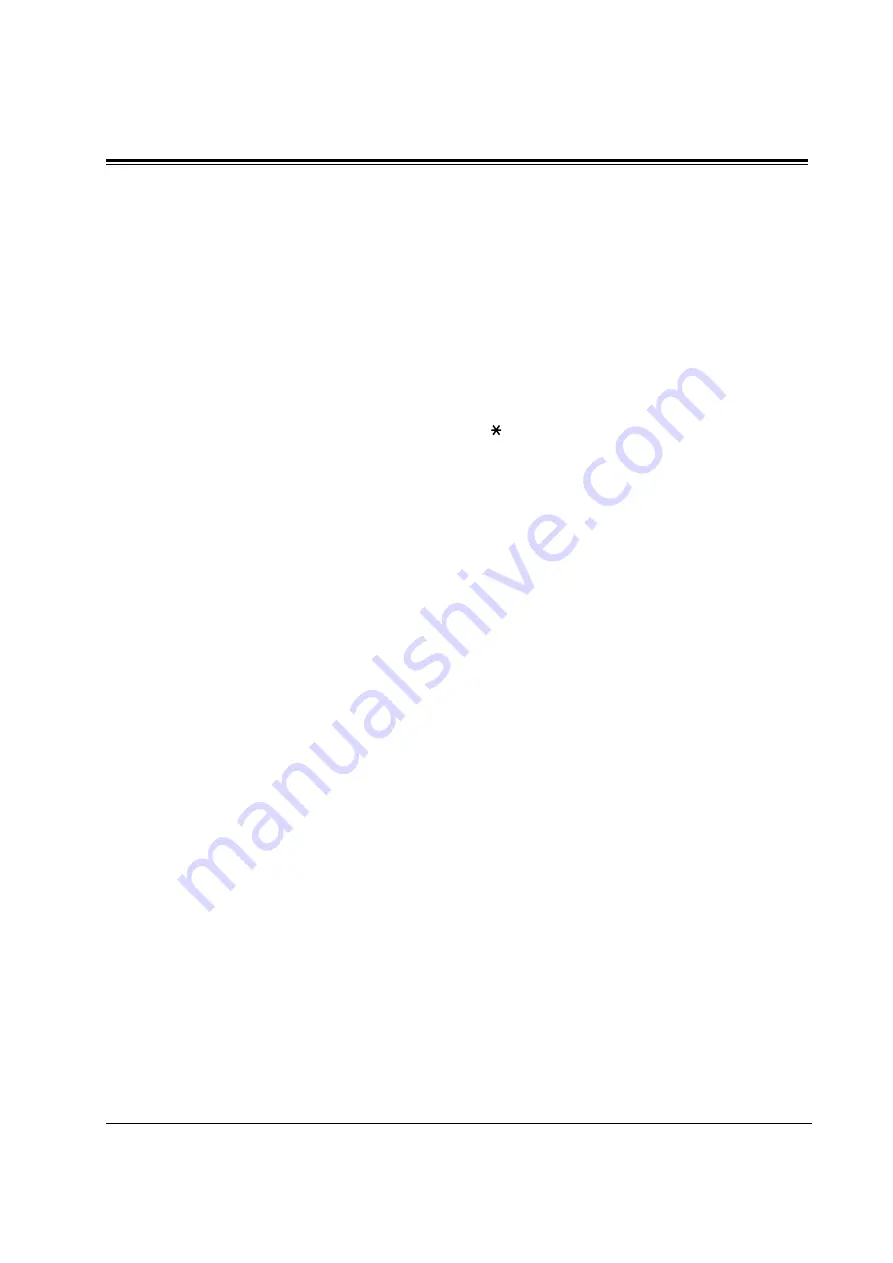
S
3
Features
3-108
Features
Example of SMDR printout format:
Explanation
(1) Date: shows the date of the call as Day / Month / Year.
(2) Time: shows the end time of a call as Hours:Minutes /
AM or PM.
(3) Ext: shows the extension number, floating number, etc.
that engaged in a call.
(4) CO: shows the CO line number used for the call.
(5) Dial Number
Outgoing call: shows the other party’s telephone
number (maximum 20 digits). Valid digits are 0
through 9,
, #, P (if PAUSE button is pressed), or the
mark “=” (if a host PBX access code is entered).
Received call: Shows <I> that indicates ‘Incoming’.
(6) ANS: shows the time between the start of ringing and
answer.
(7) Duration: shows the duration of the call as Hours:
Minutes:Seconds.
(8) Cost: shows the cost of the call.
(9) Acc (Account Code): shows the account code
appended to the call.
(10) CD (Condition Code): shows call handling type with the
following codes:
TR: Transfer
FW: Call Forwarding to CO Line
RM: Remote access to a modem
To print out the record of system programming items that
have been assigned, use the program [802] “System Data
Printout.”
Conditions
• Connect a printer provided with an EIA (RS-232C) interface to the EIA
(RS-232C) connector located on the main unit. After connecting a
printer, do not press the RETURN key, if provided on the printer, in 10
seconds.
• When programmed for outgoing toll calls only, printing occurs only for
calls which start with the numbers stored in any Denied Code Table
from levels 2 to 6. If ARS is employed, not the user-dialed but the
modified number is checked against these tables.
• This system can store information up to 100 calls. If more calls are
originated or received, previous records are deleted starting from the
oldest one.
• This data is not deleted when you reset the system.
• If the system clock is not set by system programming or if the calendar
IC is out of order, the date and time is not printed out.
















































